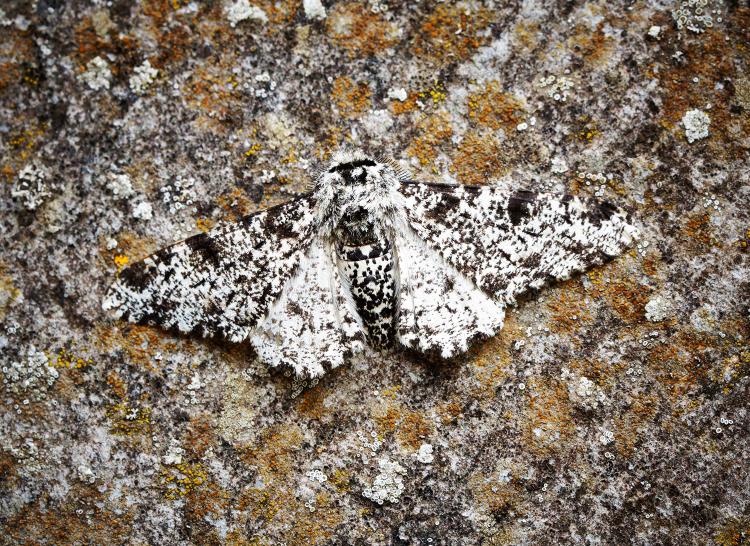Quick evolution is helping wildlife survive, scientists find
New research from across the globe found that the ‘fuel of evolution’ in wild animals is two to four times more abundant than previously thought
Climate change is forcing animals to adapt—and fast. New research from a global team of researchers, including one from the University of Colorado Boulder, finds that, while not ideal, wild animals might be better equipped to deal with these changes than expected.
A team of researchers led by Timothée Bonnet from Australian National University (ANU) found that wild animals have two to four times the capacity to evolve in response to their environment—a process called adaptive evolution—than previously thought, according to new research out in the journal Science.

At the top of the page: Spotted hyenas adapt well to changes in their environment. Here, a clan of hyenas in the Ngorongoro Crater (Tanzania) quickly declared a broken-down roller as their new favorite resting place (Photo by Oliver Höner). Above: Andrew McAdam is an associate professor of ecology and evolutionary biology at CU Boulder.
With global temperatures only forecasted to rise, which in turn forces new adaptive pressures onto wild species, it’s important to study how said populations are changing in response to their environment, say the researchers. This study, while not a silver bullet, provides a little more context—and a reason for hope.
“The world is changing, and wild organisms have only two options to cope with persistent environmental change: move or evolve to track these changes,” said Andrew McAdam, an associate professor in ecology and evolutionary biology at CU Boulder.
Darwinian evolution is the process by which natural selection results in genetic changes in traits that favor the survival and reproduction of individuals. The rate at which evolution occurs depends crucially on genetic differences between individuals in their ability to survive and reproduce.
Darwin thought of the process of evolution as something that proceeded extremely slowly, visible only over geological ages. However, “since Darwin, researchers have identified many examples of Darwinian evolution occurring in just a few years, and discovery of these examples has accelerated recently thanks to technological progress in genetics and statistics,” said Bonnet.
In this new study, the team evaluated the extent of genetic differences for survival and reproduction systematically on a large scale, rather than on an ad hoc basis. The team of 40 researchers from 27 scientific institutions used studies of 19 populations of wild animal around the world.
These included superb fairy-wrens in Australia, spotted hyenas in Tanzania, red deer in Scotland and red squirrels in Canada—the species that McAdam studied. The different studies have been running for an average of nearly 30 years each, generating a remarkable resource of detailed records on wild animal populations.
“We needed to know when each individual was born, who they mated with, how many offspring they each had, and when they died. Bringing all the 19 studies together gave us an incredible 2.6 million hours of field data collection over several decades. We combined this with genetic information on each animal studied to estimate the extent of genetic differences in their ability to reproduce, in each population,” Bonnet said.
After three years of trawling through reams of data and developing new statistical methods, Bonnet and the team were able to quantify this genetic variation, which is what controls how much natural selection can cause genetic changes in each population. The answer was, in general, much higher than previous estimates.

A common example of fast evolution is the peppered moth (Credit: Ben Sale from Stevenage, UK, CC BY 2.0, via Wikimedia Commons).
“The method gives us a way to measure the potential of current evolution in response to natural selection across all traits in a population. Being able to see so much potential change came as a surprise to the team,” Bonnet said.
“This has been a remarkable team effort that was feasible because researchers from around the world were happy to share their data in a large collaboration,” commented Loeske Kruuk, also from ANU but now at the University of Edinburgh in the United Kingdom. “It also shows the value of long-term studies with detailed monitoring of animal life histories for helping us understand the process of evolution in the wild.”
However, the researchers say it’s too early to tell whether the actual rate of evolution is getting quicker over time.
“We don't know whether species are adapting faster than before because we don't have a baseline. We just know that the recent potential (the amount of 'fuel') has been higher than expected, but not necessarily higher than before,” Bonnet said.
According to the researchers, their findings also have implications for predictions of species’ adaptability to environmental change.
“This research has shown us that evolution cannot be discounted as a process which allows species to persist in response to environmental change,” Bonnet said.
While this study uncovered much more fuel for evolution, there is no guarantee that these populations will be able to evolve fast enough to keep up with the increasing rate of environmental change.
“But what we can say is that evolution is a much more significant driver than we previously thought in the adaptability of populations to current environmental changes,” he said.
This piece was adapted from the ANU’s press release.

